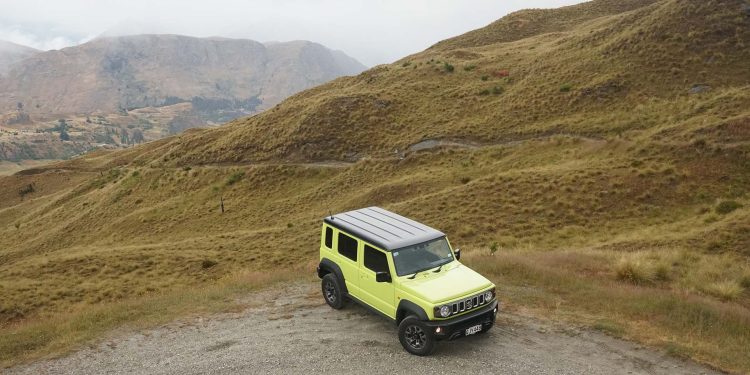Jimny 5Dr – First Drive
Words NZ Peter Louisson | Images PL
It has been around for over half a century in some form or another and now Jimny, in its fourth generation, is available for the first time as a five-door offering, broadening its potential customer base.
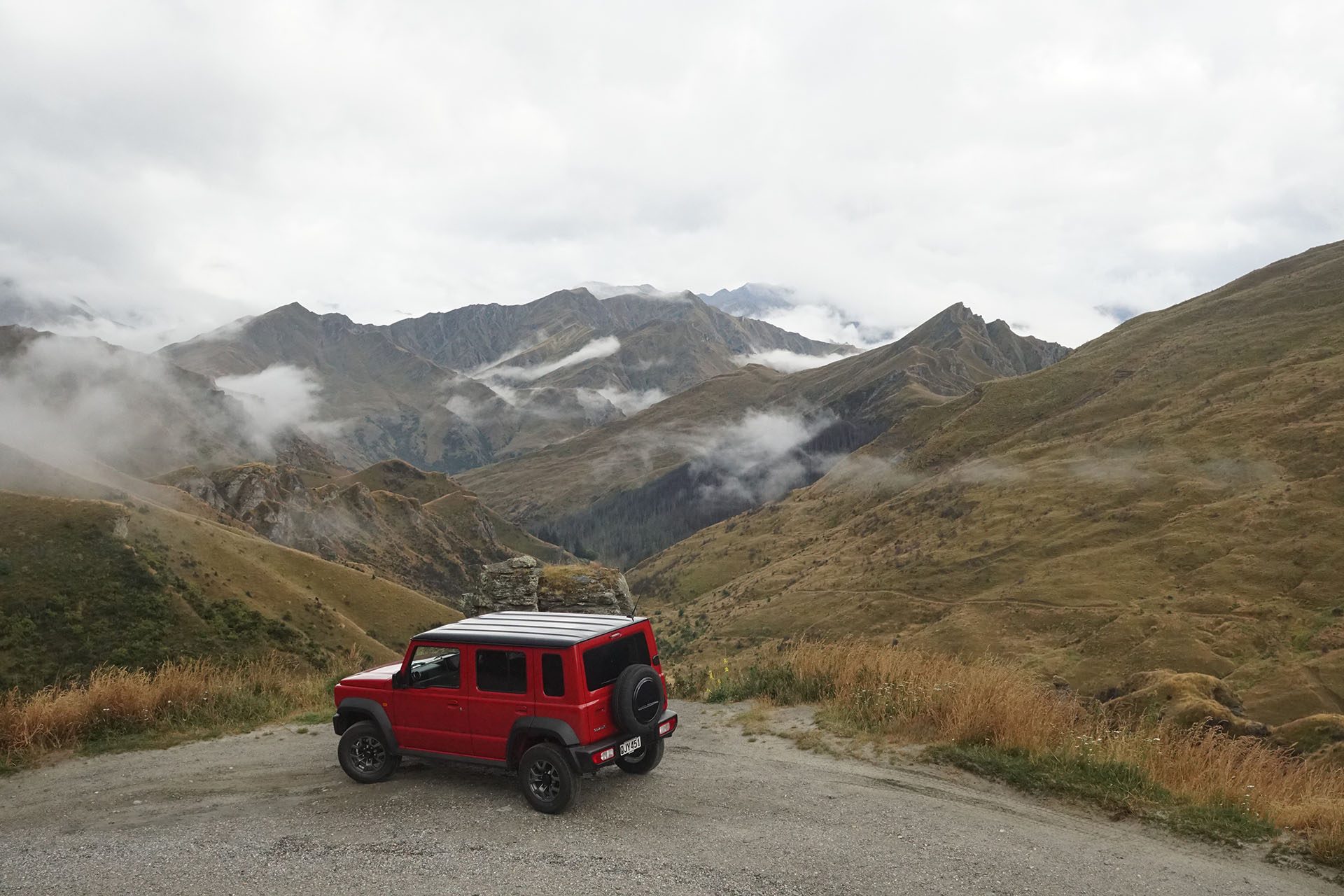
Many might have wanted the cute three-door variant but practical issues, like tight rear seats and a lack of luggage space with all pews in use (85L) put paid to that. However, the five-door is ever so much more practical, despite its diminutive size (3985mm long by 1645mm wide and 1720mm tall), able to accommodate two adults in the rear and 211L of luggage in behind. That’s all thanks to a stretch in wheelbase of 340mm, and takes the Jimny from being a singles- or couples-only car to something small families or retired folk with grandkids might aspire to.
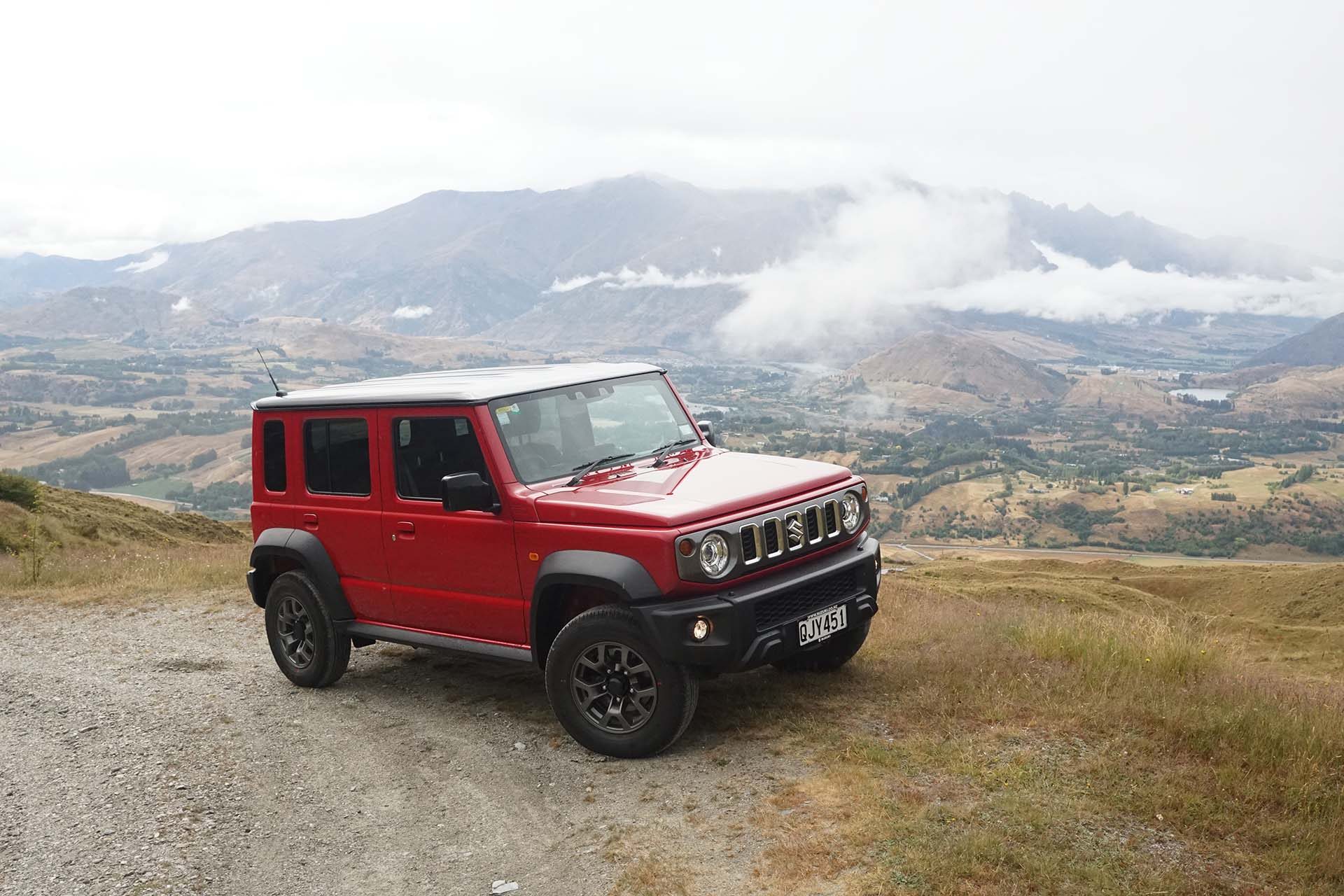
Jimny is an icon of our time and that’s mainly because it is unique in its sector, originally a Kei car-style miniSUV. In fact, it still is in Japan; the domestic market gets an even smaller, narrower version of the vehicle than our one; all export variants come out of India and have the extra wheel arch width that’s missing on the domestic market model. It essentially has no competition here, though in Japan Daihatsu is evidently in the throes of creating a tiny rival.
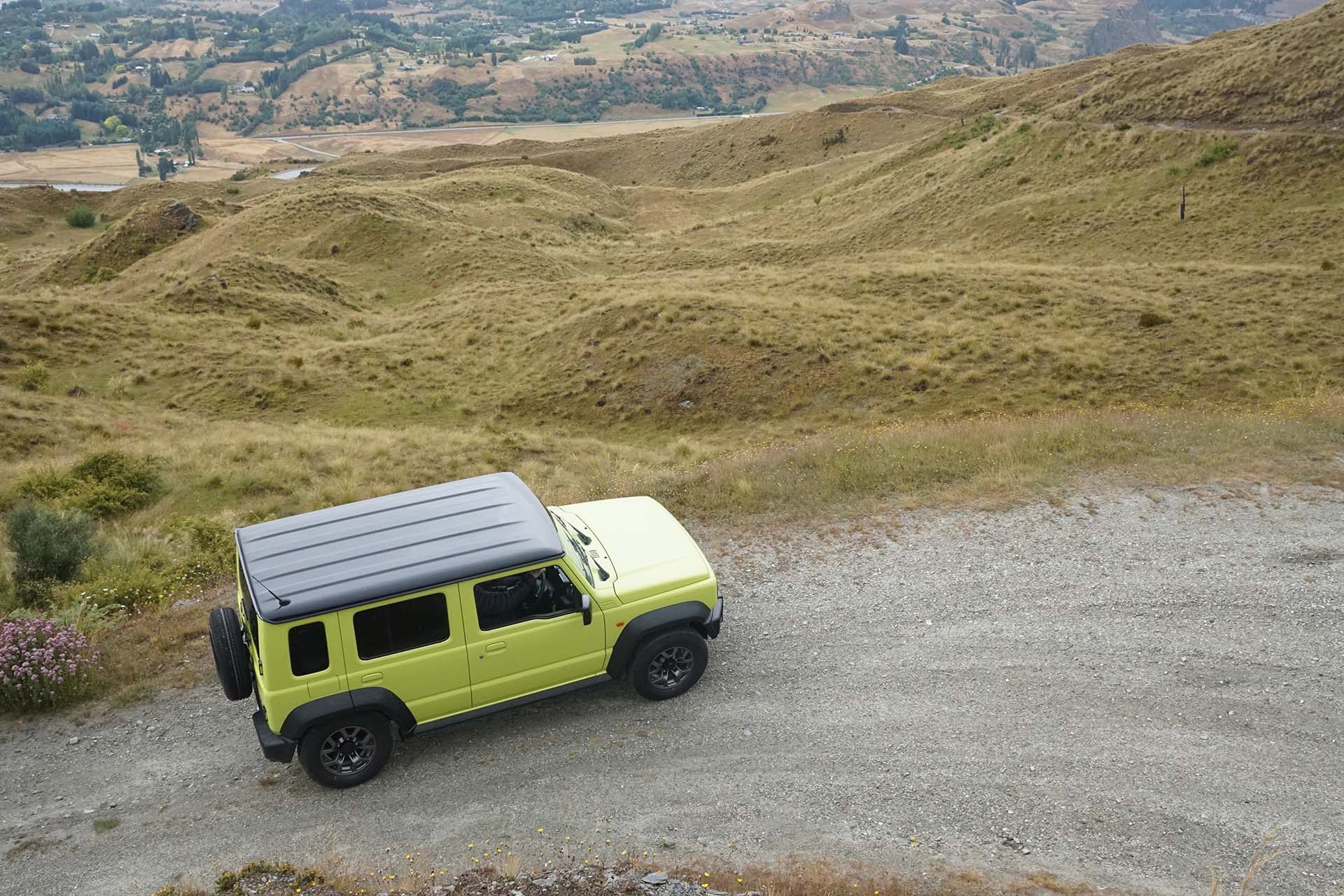
Anyhow, now in its fourth generation, the Jimny three-door subcompact SUV is cute as a button, especially in its lemony hero colour with optional black roof colouring. In total, Suzuki has sold over three million of its Jimnys. Initially there were wait times of six to nine months, in part because production was somewhat limited. Suzuki seemed to manage supply and demand rather well, bolstering its desirability factor. Even now with the five-door coming, lead times are still many months for those countries with limited supply. Suzuki NZ reckons this shouldn’t be such an issue with the five-door here, initially arriving as a five-speed manual variant, on sale now, with the four-speed auto still a couple of months out. The company is expecting lead times of less than three months after ordering.
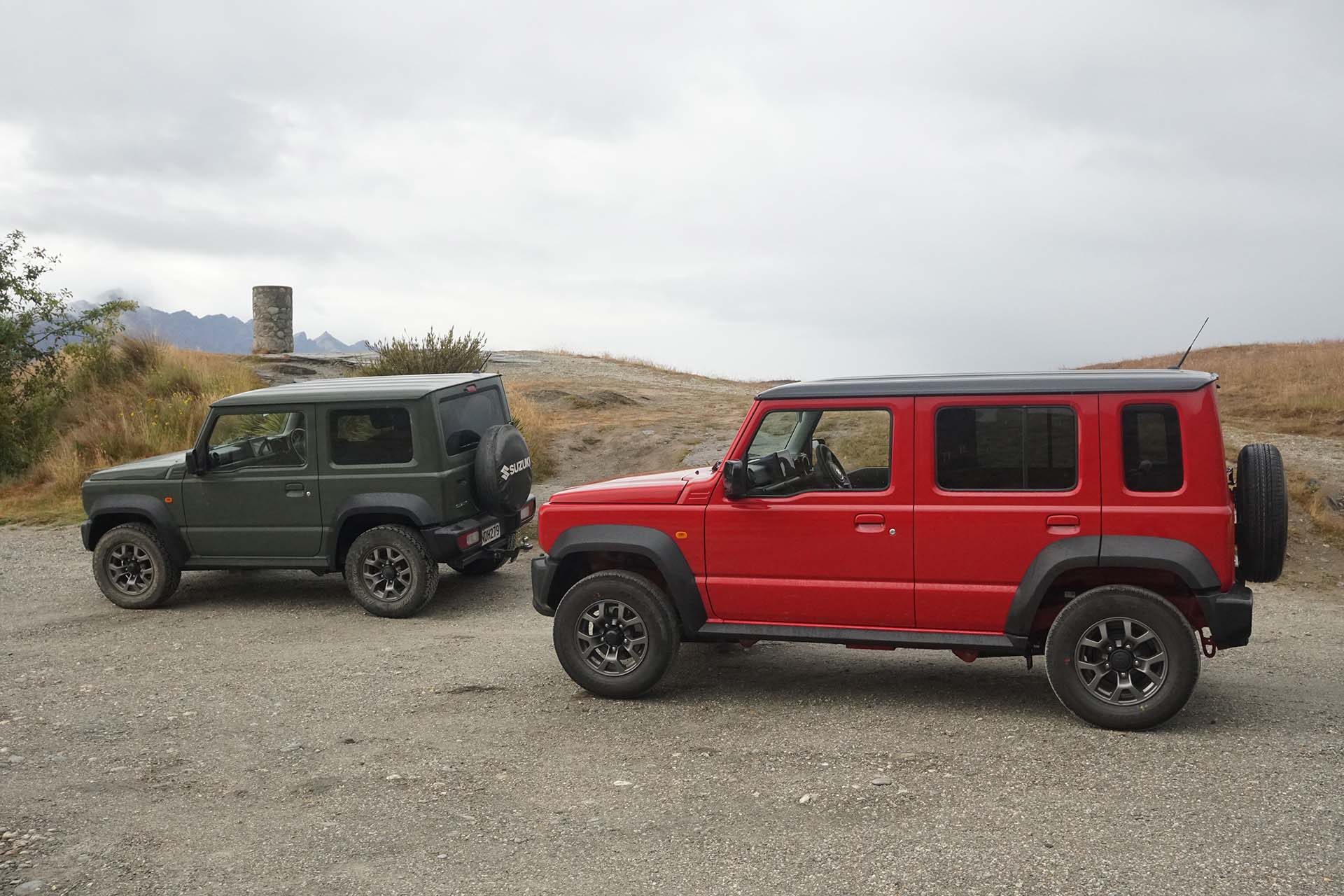
What makes Jimny even more interesting is that it is actually designed to be off-road competent. And on-road antics really do play second fiddle to its off-road orientation. Like Ineos Grenadier, the last vehicle launch we attended prior to this one, Jimny has rigid axles front and rear, 2H, 4H and 4L settings for demanding terrain, a body-on-frame chassis, good ground clearance (210mm) and approach and departure angles, and even ball and nut (or recirculating ball) steering mechanism because of its strength and durability, and the fact it won’t rip your arms off in hard core off-road terrain. There’s a brake-operated LSD too.
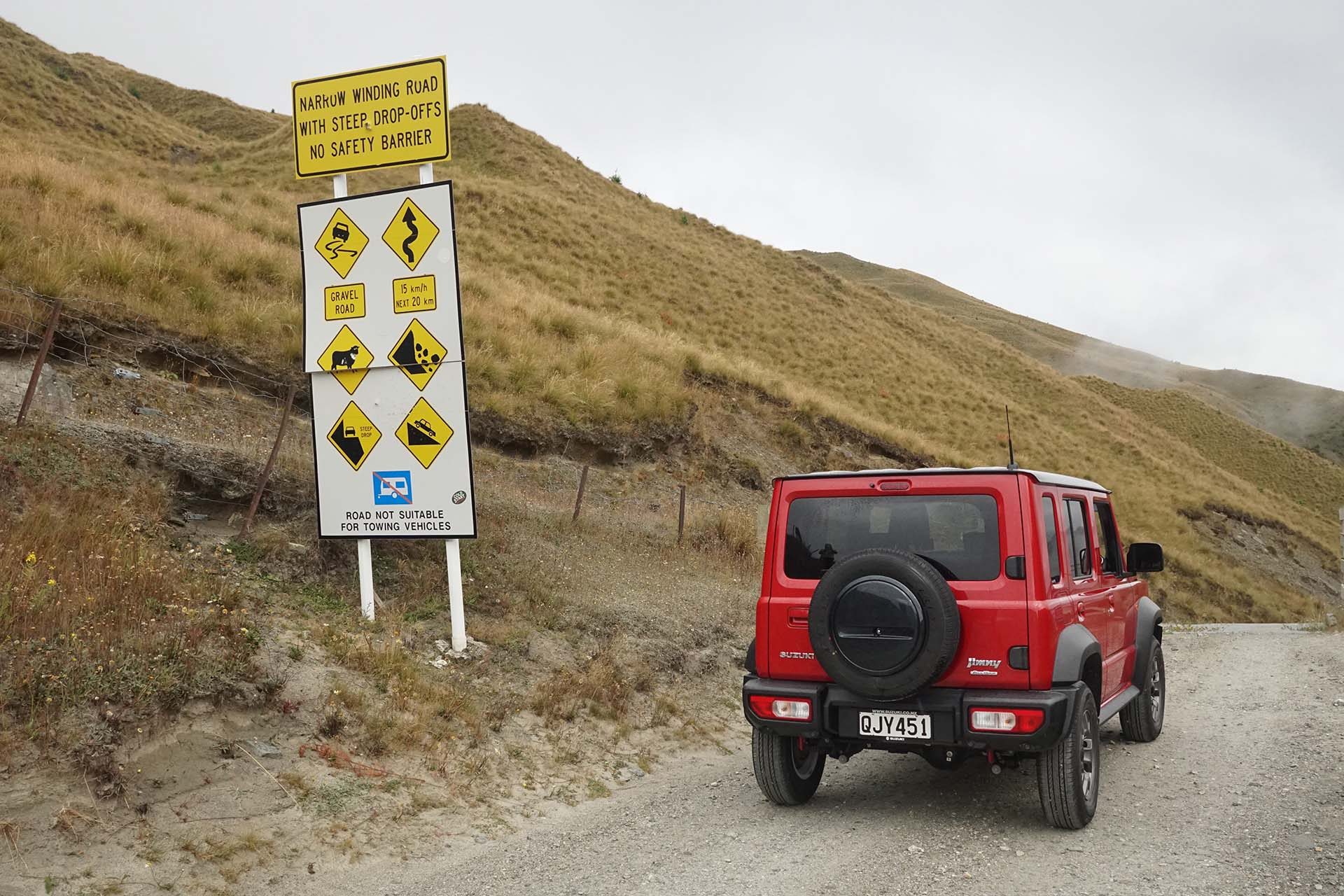
The downside of all this is evident once you get back on tarmac, the steering requiring lots of turns lock to lock (4.2) and lacking in feel both on centre and off. It’s rather prone to understeer when pushed too. And in the case of the abbreviated three-door Jimny there’s challenging ride quality. That, as much as the added space, is what will likely sell the family-friendly Jimny as much as the added versatility. It’s ever so much better resolved in the five door. Not that you’d call it plush exactly, but it has lost that crashy factor for sure. And it’s not like we didn’t try it out on a reasonably demanding track; Skippers Canyon Road is 22km long, single trail (so passing oncoming vehicles requires plenty of care and attention) and features sheer drop-offs that the squeamish will not enjoy. It’s steep and demanding in a few parts too, enough that rental companies won’t insure vehicles using the road.
For the Jimny five-door it was a romp in the mixed conditions we encountered, mainly dry, that didn’t even require the services of 4L. For the final third we employed 4H which you can select on the go. It barely raised a sweat on the no-exit road.
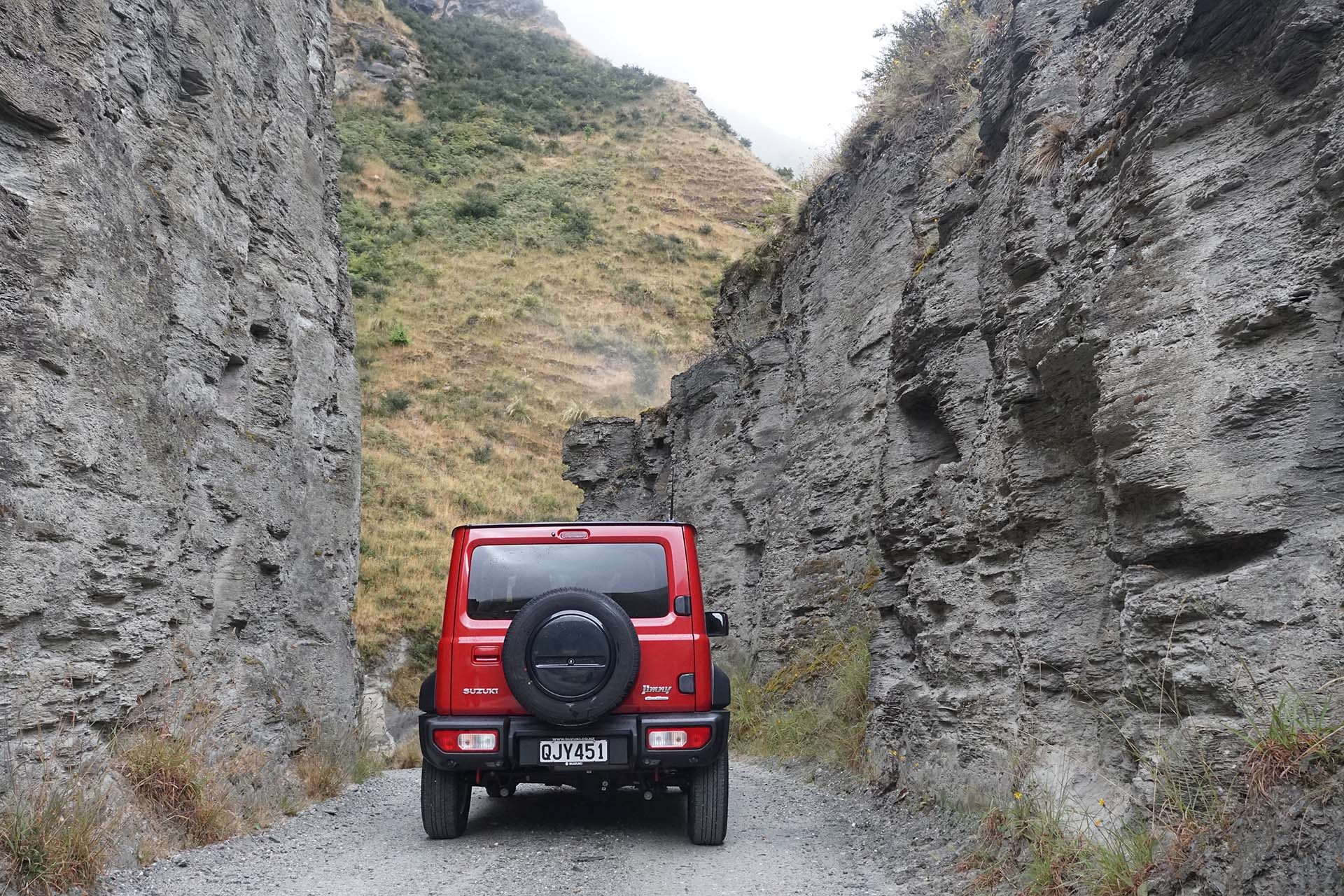
Mechanically there’s no real difference between the Jimny with three or five doors. They share the same powertrains and chassis, only there’s 340mm of extra wheelbase in the new variant (2590mm vs 2250mm). So Suzuki have had to shore up the chassis in places and suspension settings and mounts are also beefed up. There’s obviously a bit more of a glasshouse as well and the front five-slot grille is grey with grey surrounds. Inside it is much the same but there are updates, the most obvious being the adoption of the nine-inch infotainment system that features on the S-Cross hybrid. The additional window lifts are set behind the conventional handbrake. Squabs in the rear have more fill than in the three-door too.
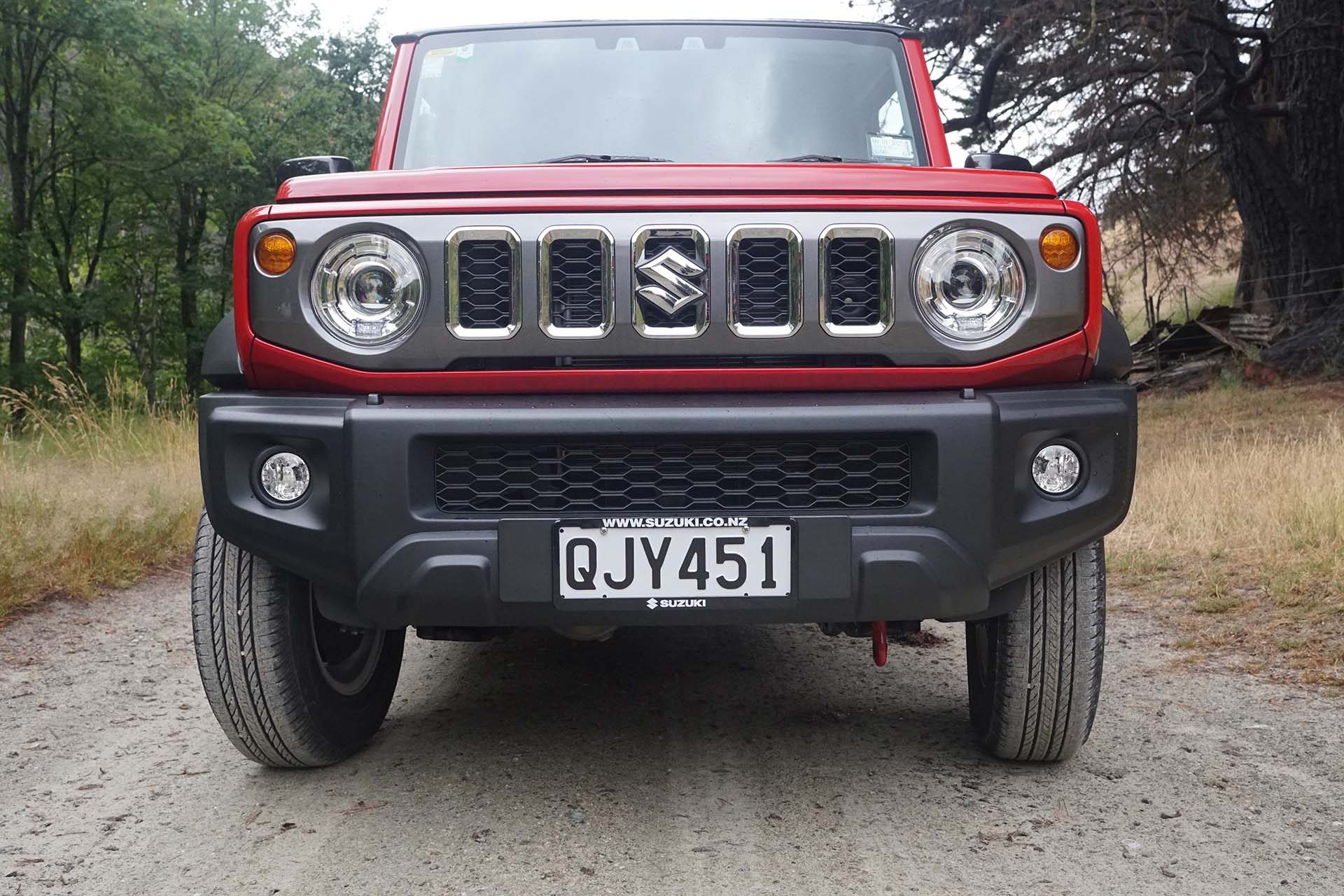
Powering Jimny is what some might consider an antiquated engine, a 1462cc VVT atmo mill that creates a meagre 75kW at 6000rpm and 130Nm at 4000rpm. However, the five-door weighs just 100kg more than the three-door and is still only 1200kg. It runs on 91ULP happily and where the three-door manages fuel use of 6.4-6.9L/100km (man vs auto), the five-door is set at 7.1-7.7L/100km, respectively.
Even the transmissions you’d consider retro in their allotment of four speeds for the auto and five for the manual. In both cases another cog somewhere between first and third wouldn’t go astray for off-road work, second a touch high in both compared with first. Suzuki retains this powertrain because it has a reputation for being unbreakable and that’s rather what you want in a vehicle oriented for trail work. We preferred the manual to the auto, but then this has old world charm so you want an old world transmission to match. City folk might argue otherwise which is probably why sales of the three-door have been split almost exactly 50:50 between the two trannies. Suzuki expects five-door to be the same.

While we did mention that the ride of the five-door is vastly improved over that of the three-portal vehicle, as is NVH, the one aspect where the smaller unit is fractionally better off-road is where you might become bellied with the longer machine. Ramp over angles are 27 degrees for the three-door, 24 for the longer variant. Approach and departure angles are the same, well into the mid-thirties for former, upper 40s for the latter.
The other aspect, as mentioned earlier, is luggage capacity, up dramatically for the five-door when all seats are in use. That’s because there is a stretch in luggage bay length of 367mm. There’s also two-tier split folding back there, though figures from Suzuki suggest the three-door can hold more with only two seats in use, and that makes no sense to me whatsoever. The five-door gets a 12v socket back there.

We got a lift from the airport to the overnight digs in a three-door Jimny which was pretty tight in the back for an adult, access not the best either. That all changes with the five-door, easier for ingress and with proper leg room now.
There’s a $5k difference between the various three- and five-door variants. That puts the manual five-door at $40,990 plus onroads, or $41,490 for the two-tone black-roof variant. The auto is $44,990 or $45,500 for the contrasting paint scheme.
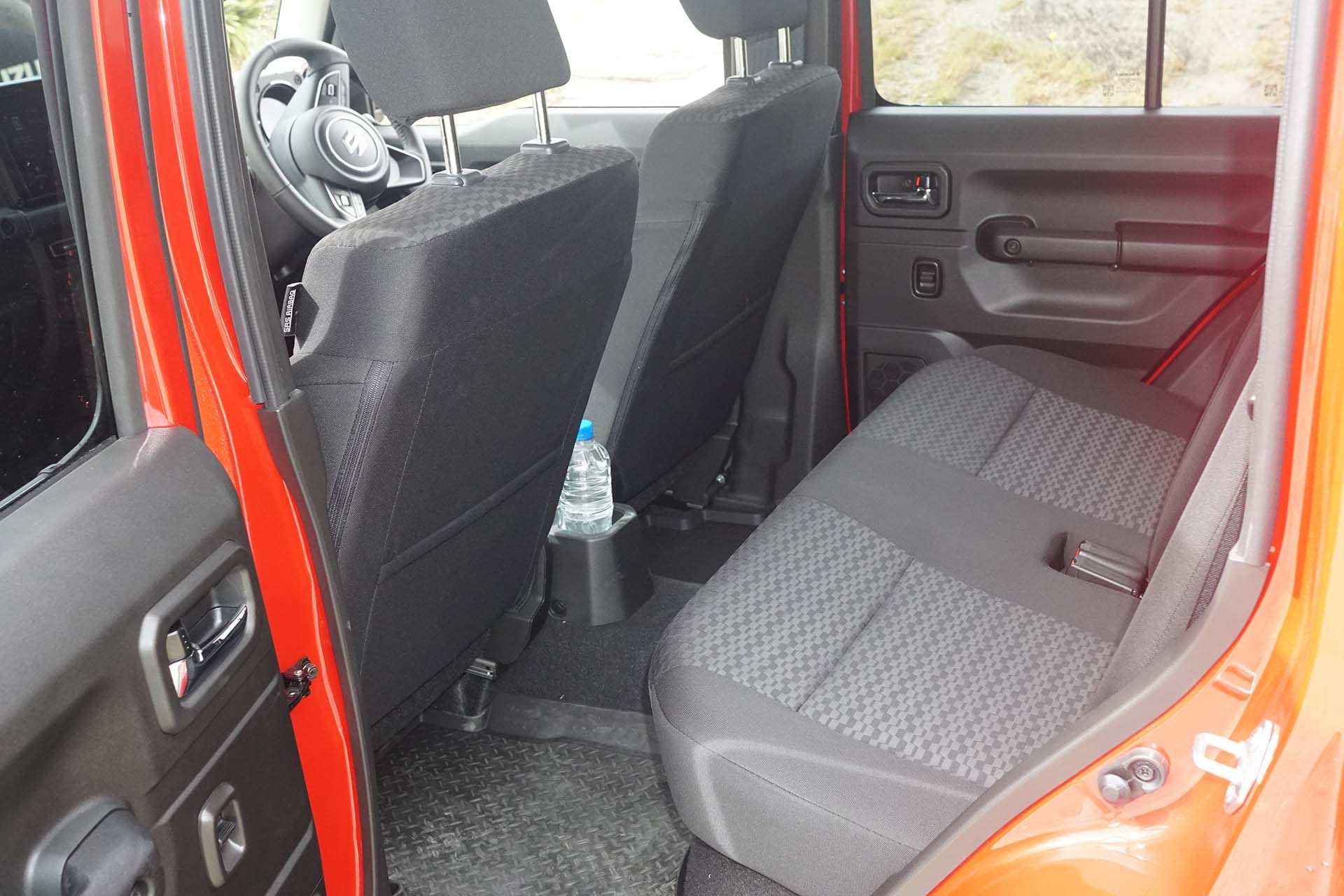
The auto five-door variant comes with adaptive cruise, while all five doors get wireless Apple CP, wired AA, six airbags and lane departure warning. They also come with a reversing camera, rear parking sensors and electric folding mirrors, an update on the base model. Other features include weaving alert, dual camera brake support for AEB and forward collision warning, privacy glass, 1300kg braked towing capacity and hill holder and hill descent control. Unlike the three-door which has a three-star ANCAP rating due to expire at year end, the five-door won’t be tested by ANCAP. The warranty is five years/100,000km.
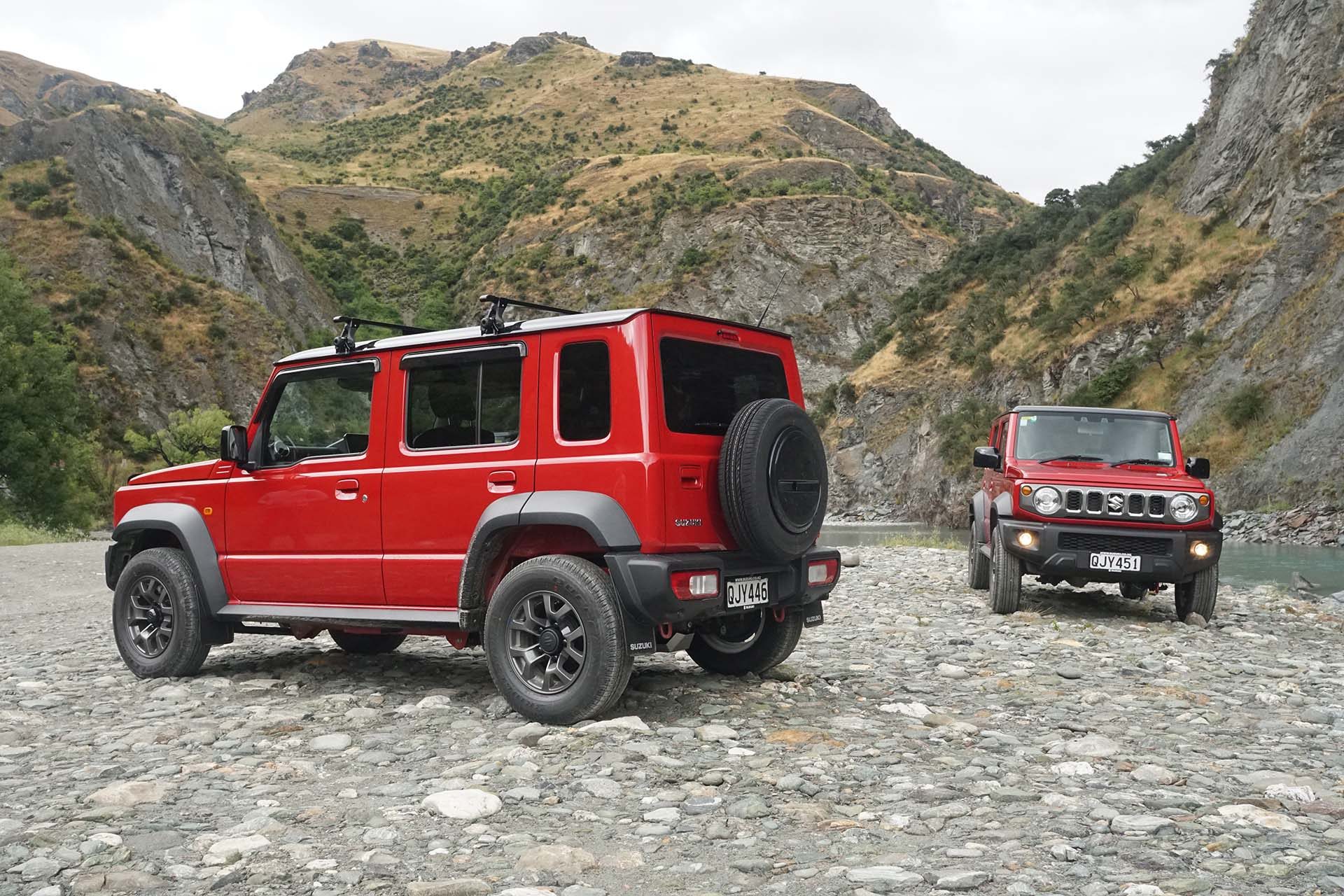
Here, Jimny sold as well as Vitara and Ignis last year but expect this year to be different; Suzuki is expecting to double Jimny sales to around 1600 in 2024. Swift remains its best seller, with around 4000 registrations expected this year, following the launch of the new model midyear.



